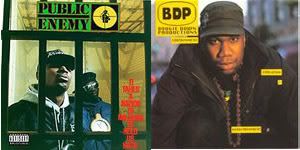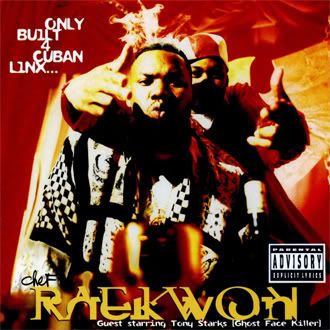The 14th installment of I Used to Love H.E.R., a series in which artists/bloggers/writers discuss their most essential or favorite hip-hop albums (read intro) comes to us from neither an artist nor a blogger, but Adam Farrell, head of marketing for Beggars Group, proves to be a pretty damn good writer. (Also, he calls me a “publisher,” which is flattering/hilarious.) Adam rekindles some memories from his childhood with this hip-hop mixtape.
The Most Freshest Mixtape Ever Made By A 9-Year-Old
First of all, big apologies to the publishers of So Much Silence for such a delay in pulling this together … even though they assured me the world was waiting. First excuse, I had a daughter about four months ago. Her name is Ella and I hope to hell she has good taste in music. Second excuse, I’m not a writer so the idea of me putting something up on a blog that I’ve written scares the baby formula out of me.
So as I sit here on paternity leave watching And You Don’t Stop on my DVR, it’s kicking my ass into starting this little missive.
My relationship with hip-hop is deep and varied. Often times, it was a way for me to distinguish myself from all my hessian, metal-loving friends during high school in almost rural Pennsylvania. Other times, it was at the core of a connection to memories past.
But my relationship with hip-hop really started during the Summer of 1984. My family was about to move to Copenhagen, Denmark, and fuck if I even knew where that was. So, in between watching Edwin Moses and the aliens in “V” bust havoc, I ended up ripping songs from radio stations (just like people do when they listen to White Stripes albums nowadays) and made what ended being a most freshest mixtape.
I’m recalling this all from memory, but I’m pretty sure side-A on the Normal Bias went something like this:
1. It’s Like That, Run-DMC (Profile)
This was the perfect opener for any 9-year-old’s mixtape whose previous experience with music ranged from Billy Squier to Billy Idol. Of course, Billy Squier went on to be the second most obviously sampled rock artist in history (only outdone by Steve Miller), while I think Steve Stevens was asked to play the guitar part on King of Rock, but declined because in late 1984 his career didn’t need saving (Vince Neil would step in for that later). Anyhow, this was a super fresh way to open a hip-hop mixtape in 1984.
2. Basketball, Kurtis Blow (Mercury)
I really hated basketball growing up. Being a stumpy, low-to-the-ground kind of kid, I was more suited for bicycling and playing catcher. Plus, I lived in Milwaukee and Sidney Moncrief, the Lamont Sanford-esque baller from the late 70s, was simply past his prime by 1984. In Denmark, they played handball on b-ball courts. So, it took going to a b-ball powerhouse of a school like Arizona to realize that basketball was an awesome excuse to make out with drunk chicks at sports bars. This song had a catchy as hell hook.
3. Jam On It, Newcleus (Mayhew)
Every night that Summer of ’84, we’d dial up JAMZ 103.7 (or some shit like that) because they played Jam On It precisely at 10pm. It was a ritual. We’d grab some Capri Sun, a box of Nerds and wait for our Swatches to hit the hour. Once that first intrepid basline hit, we’d just sit on the floor in front of our crappy boom box and FEEL IT. For like 37 days straight, we felt it. We also thought the track was called “Jamoney”. We got my dad into it and every time he’d see us he’d go all dad-style, “Jamoney”, and give us a high five. Jam On It, I know this now. My dad doesn’t.
4. Can You Feel It, Fat Boys (Sutra)
This might have been the first hip-hop song where I heard beat boxing. But once I did, it was my mission to be a fuckin’ sick-ass beat boxer. But I didn’t get much practice in Copenhagen and by the time I got back to Milwaukee, Mark Joyner had pretty much mastered all 3 beat box moves. I decided to take up drums. Mark Joyner only had one arm.
5. Fresh, Fresh 3 M.C.’s (Profile)
This put the word “fresh” into my personal lexicon, especially anything relating to everything. It all became “fresh” – Now N’ Laters, glacier glasses, and my first pair of Nike AF 1s. To be honest, even though I love all my Nikes, from this first pair I picked up in ’84 to my most recent, they’ve always felt like shit on my DD wide hobbits feet. Sometimes, my friends, being fresh comes at a cost.
6. Roxanne’s Revenge, Roxanne Shante (Pop Art)
A few years ago, when Landspeed re-issued a heap of Dr. Roxanne Shante stuff on The Best of Roxanne Shante, I picked up a copy and remembered this being on my mixtape and how it was my favorite song. Like a lot of other hip-hop artists at that time, Roxanne had a combative, freestyle flow. Unlike a lot of hip-hop artists at that time, she probably a lot to do with the trajectory of producers and artists that would eventually be the biggest names in new school (Marley Marl, Large Professor, Eric B to name a few). This song is like a manual on how to flow. I also believe this song was a diss on some dude who wore a Kangol. I never rocked a Kangol, but they are cute as long as you keep your shirt on. Yeah, I’m lookin’ at you L.L.
7. The Message, Grand Master Flash & The Furious Five (Sugar Hill)
Probably the most obvious jam on this mixtape, but definitely the most classic. It was pretty rad that they were the first hip-hop act ever honored into the Rock N Roll Hall of Fame this year. And quite an honor to be along side Patti Smith and The Ronettes, even if the Hall is a bit of a red herring for how we recognize great achievements in music.
8. Tour De France, Kraftwerk (EMI)
So, what does a Kraftwerk tune have to do with a fresh hip-hop mixtape? Blah blah blah…. Bambaataa and Flash brought Kraftwerk to the hip-hop scene in the South Bronx and yadda blah. Not the point here. This song was on this mixtape because I was big into cycling at the time. And this before America’s Armstrong-loving, Nike-footwear, freedom-loving, French-beating love of cycling. Back in Milwaukee, I was the weird kid who rode a ten-speed instead of a BMX, and rocked a Colnago cap instead of a Brewers hat.
But once I got to Denmark, I found that people biked everywhere. And not just that, people have a bike to ride to work, a bike to ride on weekends and a bike for the grocery store. The Danes fuckin’ loved bikes and I was into that shit. And it was all Danish-cute with bike paths running everywhere with their own stoplights, lanes and signage. Cute like LegoLand. Putting a Kraftwerk jam on this mixtape could have been some kind of 9-year old prescience, but I put this jam on the mixtape because I loved (and still love) bicycles.
Besides strong legs, I got more hip-hop living in Copenhagen than you could imagine. By the end of the year, my brother was a pretty well known “wild style” graffiti artist (even featured in the Martha Cooper-esque Dansk Wild Style book … if anyone can find a copy hit me up in the comments) and we hung out in a crew of people that eventually got famous, like Lukas (yeah, the “with the lid off” Lukas).
By the time I got back to Milwaukee, all my friends were into INXS, Peter Gabriel and Pet Shop Boys – decidedly white music. But I kept my mixtape (and subsequent ones) close and every track begat some other discovery in hip-hop music leading to this very day.
Upon reflection, I most likely reveled in the fact that I was one of the few white kids into hip-hop in my neighborhood. Or maybe, I just was a fuckin’ fresh-ass kid.

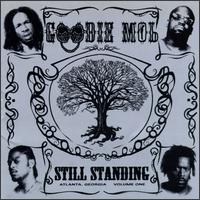 Goodie Mob
Goodie Mob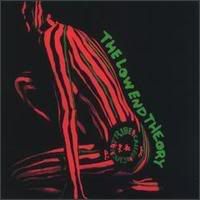 A Tribe Called Quest
A Tribe Called Quest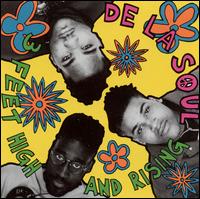 De La Soul
De La Soul
